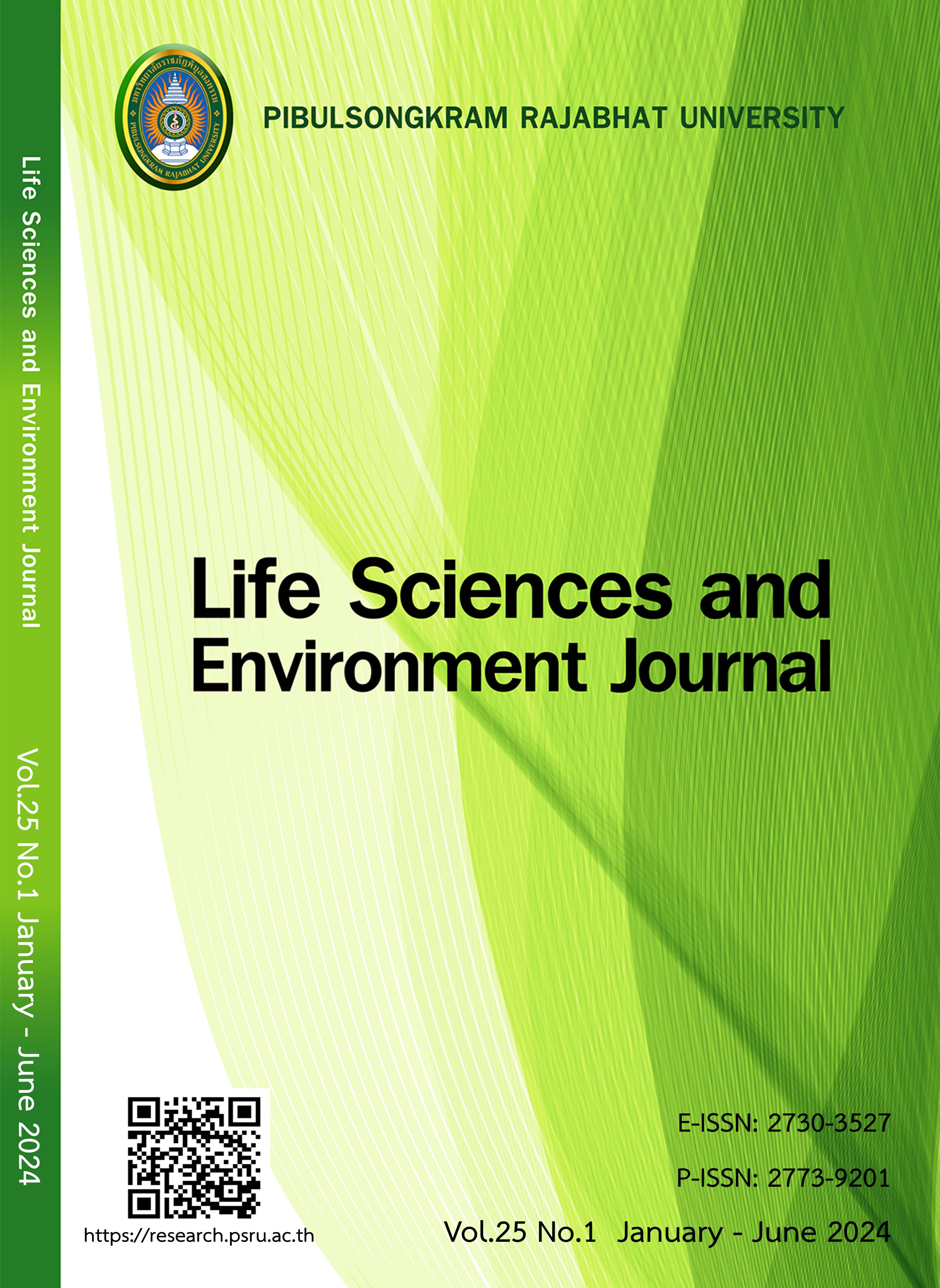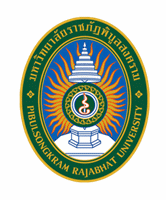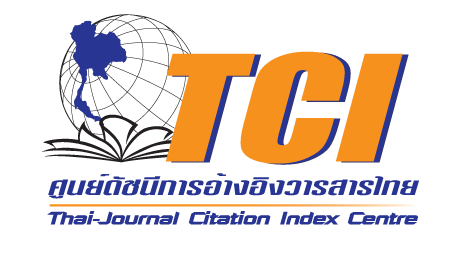EVALUATION OF ANTIOXIDANT ACTIVITY AND PHYTOCHEMICALS EFFECTS OF FRUIT-INFUSED TAGETES ERECTA KOMBUCHA BEVERAGE
DOI:
https://doi.org/10.14456/lsej.2024.16Keywords:
Kombucha, Tagetes erecta L, Antioxidants, Phenolic, FruitAbstract
Kombucha is a drink that is rich in antioxidants and contains probiotics. The objective of this research is to study the kombucha Marigold formula, evaluate primary physical characteristics and Antioxidant effects using ABTS Assay as well as phytochemicals (phenolic content and flavonoid content) of various kombucha marigold formulas with different ingredients as follows Stevia formula, fruit formula, herbal tea formula. The results showed that the kombucha was light in color compared to the color of the tea before fermentation and had a sour taste pH of 3.0-3.5. Comparison of a total of 10 marigold kombucha recipes, comparing stevia and no stevia recipes, formulations mixed with five different types of fruits and marigold recipes with three other types of tea, it was found that the results of the evaluation of free radical inhibition of kombucha flower recipes with stevia showed better effects than none-Stevia, by kombucha diluted 1-fold (50%), showed a similar effect to the standard substance Trolox 0.5 mg/ml and compared the marigold flower mixed fruit formula and found that the formula mixed with bananas showed the best result. In addition, other herbal tea recipes were evaluated compared with marigold tea. It was found that mango leaf tea is the best and better than marigold. The results of analyzing the total phenolics and flavonoids content, in the same direction as those of an antioxidant effect. In summary, the kombucha recipe for mango leaf tea mixed with stevia and bananas is the best recipe, the next is kombucha recipe of marigold tea mixed with stevia and bananas. The studies can further develop healthy beverage products, enhanced probiotics, and other products such as, making into powder as an ingredient beverage and bakery.
References
Ames BN, Shigenaga MK, Hagen TM, Oxidants, antioxidants, and the degenerative diseases of aging. Proceedings of the National Academy of Sciences 1993;90(17):7915-7922.
Bhattacharya S, Gachhui R, Parames C. Sil, Effect of Kombucha, a fermented black tea in attenuating oxidative stress mediated tissue damage in alloxan induced diabetic rats. Food and chemical toxicology. 2013;60:328-340.
Braca A, Sortino C, Politi M, Morelli I, Mendez J. Antioxidant activity of flavonoids from Licania licaniaeflora. Journal of ethnopharmacology 2002;79(3):379-381.
Brandle JE, Rosa N. Heritability for yield, leaf: stem ratio and stevioside content estimated from a landrace cultivar of Stevia rebaudiana. Canadian journal of plant Science 1992;72(4):1263-1266.
Chantra-apiruk S, Romphophak T, Kaewprasit C, Loisruangsin A. Dopamine Contents in Hom Thong Bananas during Storage at 14 and 25C. YRU Journal of Science and Technology 2018;3(2):88-93.
Hardoko E, Harisman K, Yunita E. Puspitasari. The kombucha from Rhizophora mucronata Lam. herbal tea: Characteristics and the potential as an antidiabetic beverage. Journal of Pharmacy & Pharmacognosy Research 2020;8(5):410-421.
Ibrahim SS, Abd-El Salam SS, Amer MM, Mohamed AF, Emam SM, El-Sharkawy RM. Evaluation of antioxidant activities of kombucha green tea. International Journal of advanced research 2019; 7(1):947-954.
Isantia O, Wongkrajang K. The investigation of the extraction solvent system of total phenolics and flavonoids–rich extracts and antioxidant activity from Tagetes erecta flower. Science and Technology Nakhon Sawan Rajabhat University Journal 2016;7(7):28-40.
Karolina J, Justyna K, Joanna K, Katarzyna J. Chemical profile and antioxidant activity of the Kombucha Beverage Derived from White, Green, Black and Red Tea, Antioxidants 2020;9:447.
Majid AA, Suroto DA, Rahayu ES. Probiotic potential of kombucha drink from butterfly pea (Clitoria ternatea L.) flower with the addition of Lactiplantibacillus plantarum subsp. plantarum Dad-13. Biocatalysis and Agricultural Biotechnology 2023;51:102776.
Osiripun V, Apisittiwong T. Polyphenol and antioxidant activities of Kombucha fermented from different teas and fruit juices Vanida. Journal of Current Science and Technology 2021;11(2):188-196.
Priyanka D, Shalini T, Verma NK. A brief study on marigold (Tagetes erecta): a review. International Research Journal of Pharmacy 2013;4(1):26-27.
Phakamus S, Chokrathok S, Woraratphoka J, Sasidhorn Innok S. Development of Yanang Mixed Herb Tea Products. Burapha Science Journal 2561;23(3):1682-1695.
Philippe J. Blanc, Characterization of the tea fungus metabolites. Biotechnology letters 1996;18:139-142.
Srisook K, Salee P, Srisook E. In vitro anti-oxidant and anti-tyrosinase activities of the rhizomal extracts from Amomum biflorum Jack. Thai Journal of Botany 2010;2:143-150.
Soto SAV, Beaufort S, Bouajila J, Souchard JP, Taillandie P. Understanding kombucha tea fermentation: A Review. Journal of Food Science 2018;83:580-588.
Tayana N., Inthakusol W, Duangdee N, Chewchinda S, Pandith H, Kongkiatpaiboon S. Mangiferin content in different parts of mango tree (Mangifera indica L.) in Thailand. Songklanakarin Journal Science Technology 2019:41(3):522-528.
Thiangket T, Luenloi W, Surayot P, Wongkrajang K. Comparison of chemical composition and antioxidant activity of tea and kombucha extracts (banana blossom). The 5th National Conference on Science Technology and Innovation 2022:11-17.
Urrutia MAD, Ramos AG, Menegusso RB, Lenz RD, Ramos MG, Tarone AG, Cazarin CB, Cottica SM, Vessaro da Silva SA. Bernardi DM, Effects of supplementation with kombucha and green banana flour on Wistar rats fed with a cafeteria diet. Heliyon 2021;7:e07081.
Zhen JZ, Yu-cheng S, Hua-wei W, Cai-bi Z, Xian-chun, Jian Z. Flavour chemical dynamics during fermentation of kombucha tea. Emirates Journal of Food and Agriculture. 2018;30(9):732-741.
Downloads
Published
How to Cite
Issue
Section
License
Copyright (c) 2024 Life Sciences and Environment Journal

This work is licensed under a Creative Commons Attribution-NonCommercial-NoDerivatives 4.0 International License.
Each article is copyrighted © by its author(s) and is published under license from the author(s).










